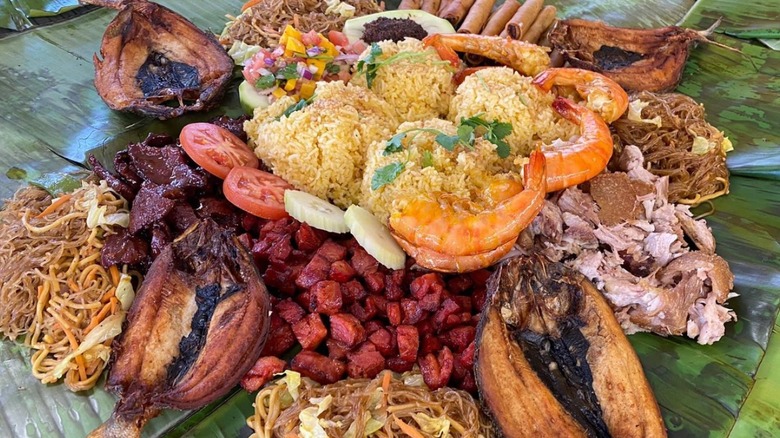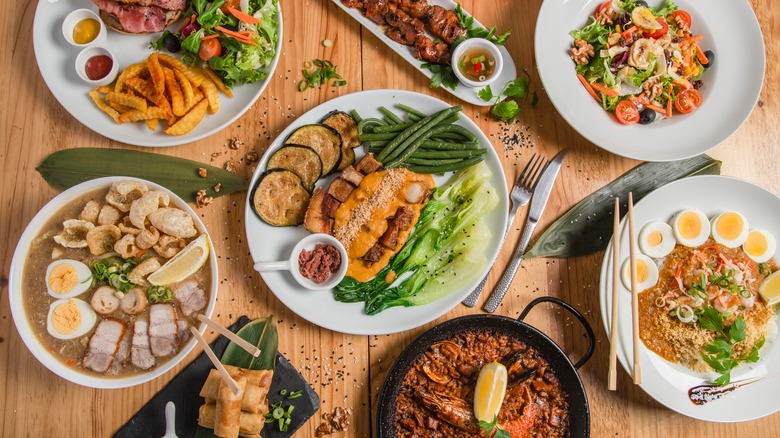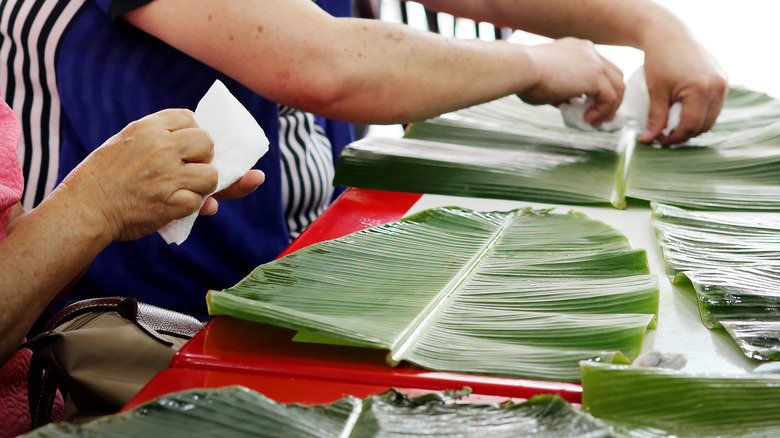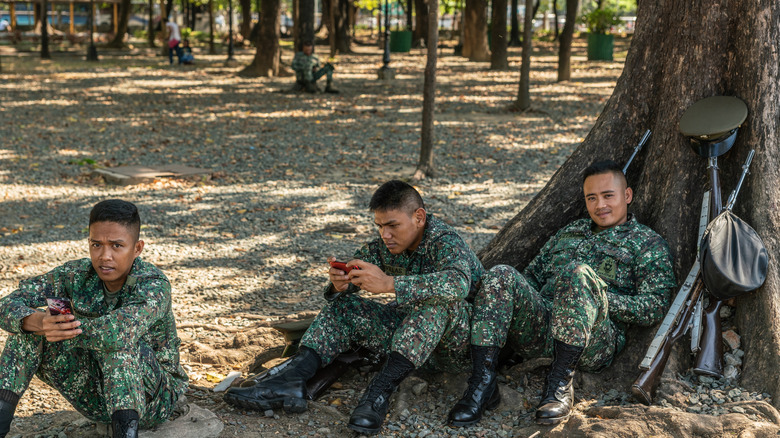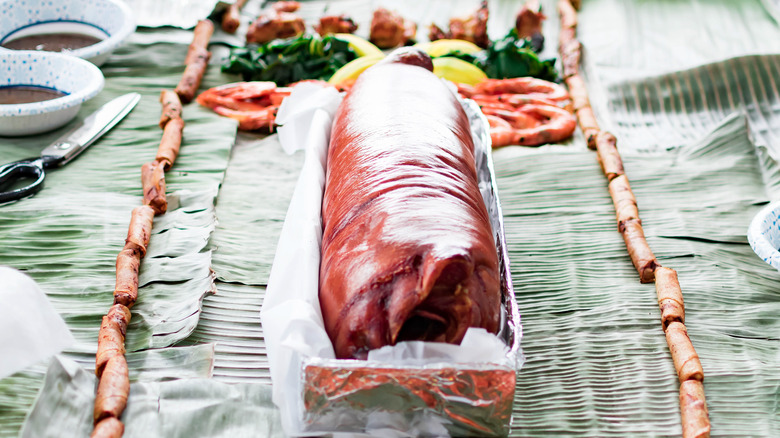Filipino Boodle Fight: The Traditional Grill-Out That Leaves Utensils Behind
Visit any Filipino restaurant, and you will see that the food culture of the Philippines entails an appreciation of community and flavorful cuisine. Those values are especially apparent in one of the nation's great traditions, the boodle fight." However, this is no ordinary fight. It's a relaxed, celebratory meal that channels cultural history from pre-colonial Filipino cuisine to the present. The boodle fight combines delicious food and fun.
A "boodle fight" involves a massive spread of culinary delights beautifully displayed on a table laden with one of nature's most versatile cooking tools, banana leaves. The approach and presentation hearken back to Filipino native traditions. Before the arrival of Spanish colonizers, Filipinos did not use eating utensils. The boodle fight embraces that approach with gusto. A boodle fight may also be called a "kamayan," a Tagalog word meaning "eating with the hands." In a typical boodle fight, rice is placed in the center of the table, with meat and other dishes on top or next to it.
The boodle fight meal plan
For a typical Boodle Fight, you'll need a long table with space for each guest. You won't need chairs, though, since the meal is usually consumed standing up. The table needs no cloth or placemats, just banana leaves to add a decorative element. The leaves are essential to authenticity and also make for easy cleanup.
The main dishes are usually grilled or fried, making them easier to eat with your hands. Saucy meats are kept to a minimum since they make the process messier (you can always add sauces on the side). Aside from avoiding dishes that pose practical challenges, the sky is the limit. Favorite Filipino dishes, like pork belly (lechon) and chicken inasal, are generally featured. Filipino-style spring rolls, known as lumpia, are often included with the fried foods.
While plain white rice is common, garlic rice (sinangag) and fried rice may also be incorporated. Vegetables, salads, or pickles are usually available to balance the meal. Fresh fruit, including mango and dragonfruit, and small desserts often grace the table, adding to the visual appeal of the spread.
Utensils not required
Any tasty Filipino fare is welcome at a kamayan. The whole point is to pile it on and dig in deep — with your hands. Traditional kamayan-style eating has a ritualized aspect. Food is generally picked up with one hand, and the rice is used to envelope smaller pieces of food, which are then brought to the mouth. Before Spanish and American colonization, eating with the hands was standard in the island nation. Although flatware such as forks, knives, and chopsticks are now common in the Philippines, most Filipinos prefer to use spoons whenever they can.
Cutlery was introduced by the Spanish in the 16th century, but the use of "kubyertos" (the Tagalog translation of the Spanish word "cubiertos") remained limited to formal dining and entertaining. However, when the U.S. took control of the islands in 1898, that changed. Americans sought to export Western dining etiquette to the country, including the strict use of flatware, transforming the way many Filipinos ate. Still, kamayan remained an important part of the culture.
The military connection
While the boodle fight has its roots in tradition, we can thank the Philippines' military for the current format. There is some confusion about where the word "boodle" came from. The Kamalayan Facebook page asserts that while boodle fights harken back to pre-colonial ways of eating, the term was "devised by Philippine Military Academy cadets, and does not represent authentic Philippine culture, but instead symbolizes fraternity among PMA members by their sharing the same food regardless of rank. The term is taken from pre-World War II West Point slang meaning 'any party at which boodle (candy, cake, ice cream, etc.) is served.'" In a boodle fight, a long table would be piled high with vast quantities of food supplied for hungry soldiers, who would go to town on the vittles, with everyone vying to out-consume the next guy.
That also explains the competitive nature of a Boodle, which is somewhat reminiscent of a mess hall, with every diner trying to eat more than their neighbor. Even civilians should come hungry and prepared to try to hold their own. Plus, trying to eat as much as possible has the added benefit of getting people used to eating with their hands.
You can probably find a boodle fight near you
Boodle fights have become increasingly popular in the U.S. and other regions with sizable Filipino populations. They have been cropping up at Filipino restaurants worldwide (though many prefer the term "kamayan," as it avoids military connotations).
Many Filipino eateries integrate kamayans into their regular menus, and pop-up boodle fights are becoming more common. They are wonderfully nostalgic events for Filipinos who grew up with the tradition and a wonderful way for Pinoys to connect with their history. For newcomers to Filipino food, they provide a unique culinary experience and a glimpse into the cultural importance of sharing food and company without too much fuss.
Boodle fights are getting easier to find wherever you live. Restaurants featuring Boodle Fights include Los Angeles' Big Boi and LA Rose; San Diego's Villa Manila; Abacá and Pampanguena Cuisine in San Francisco; Kubo and Sandok n Palayok in Chicago; Philadelphia's Perla; Bonifacio in Columbus, Ohio; Fi'co and Filipino Flavorz in Jersey City; and New York City's Mama Fina's. Pop-ups are organized by both caterers and restaurants, like A Taste of Both Worlds in Urbana, Illinois.
